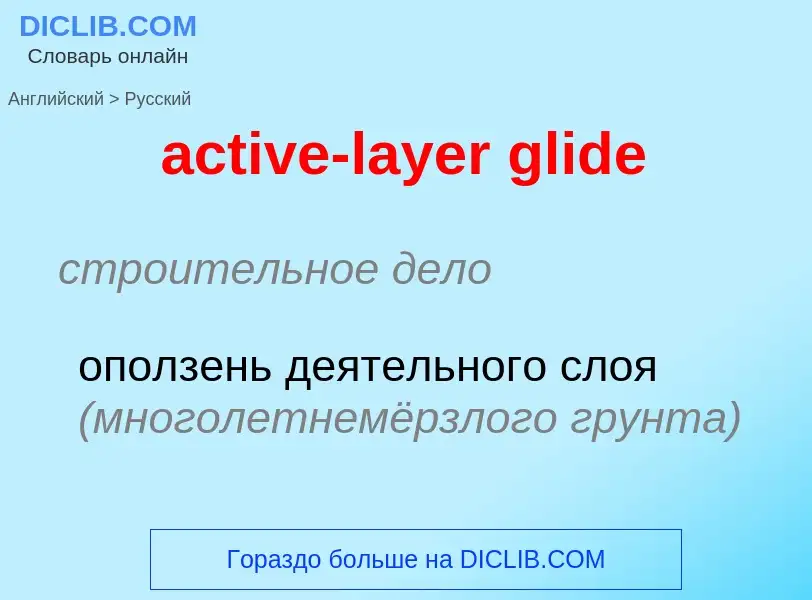Translation and analysis of words by ChatGPT artificial intelligence
On this page you can get a detailed analysis of a word or phrase, produced by the best artificial intelligence technology to date:
- how the word is used
- frequency of use
- it is used more often in oral or written speech
- word translation options
- usage examples (several phrases with translation)
- etymology
active-layer glide - translation to russian
строительное дело
оползень деятельного слоя (многолетнемёрзлого грунта)
Wikipedia
.jpg?width=120)
In environments containing permafrost, the active layer is the top layer of soil that thaws during the summer and freezes again during the autumn. In all climates, whether they contain permafrost or not, the temperature in the lower levels of the soil will remain more stable than that at the surface, where the influence of the ambient temperature is greatest. This means that, over many years, the influence of cooling in winter and heating in summer (in temperate climates) will decrease as depth increases.
If the winter temperature is below the freezing point of water, a frost front will form in the soil. This "frost front" is the boundary between frozen and unfrozen soil, and with the coming of spring and summer, the soil is thawed, always from the top down. If the heating during summer exceeds the cooling during winter, the soil will be completely thawed during the summer and there will be no permafrost. This occurs when the mean annual temperature is above 0 °C (32 °F), but also occurs when the mean annual temperature is slightly below 0 °C on sites exposed to the sun with coarse-textured parent materials (vegetation).
When there is not sufficient heat to thaw the frozen soil completely, permafrost forms. The active layer in this environment consists of the top layers of soil which thaws during the summer, while the inactive layer refers to the soil below which is frozen year-round because the heat fails to penetrate. Liquid water cannot flow below the active layer, with the result that permafrost environments tend to be very poorly drained and boggy.

.jpg?width=200)
